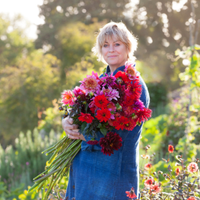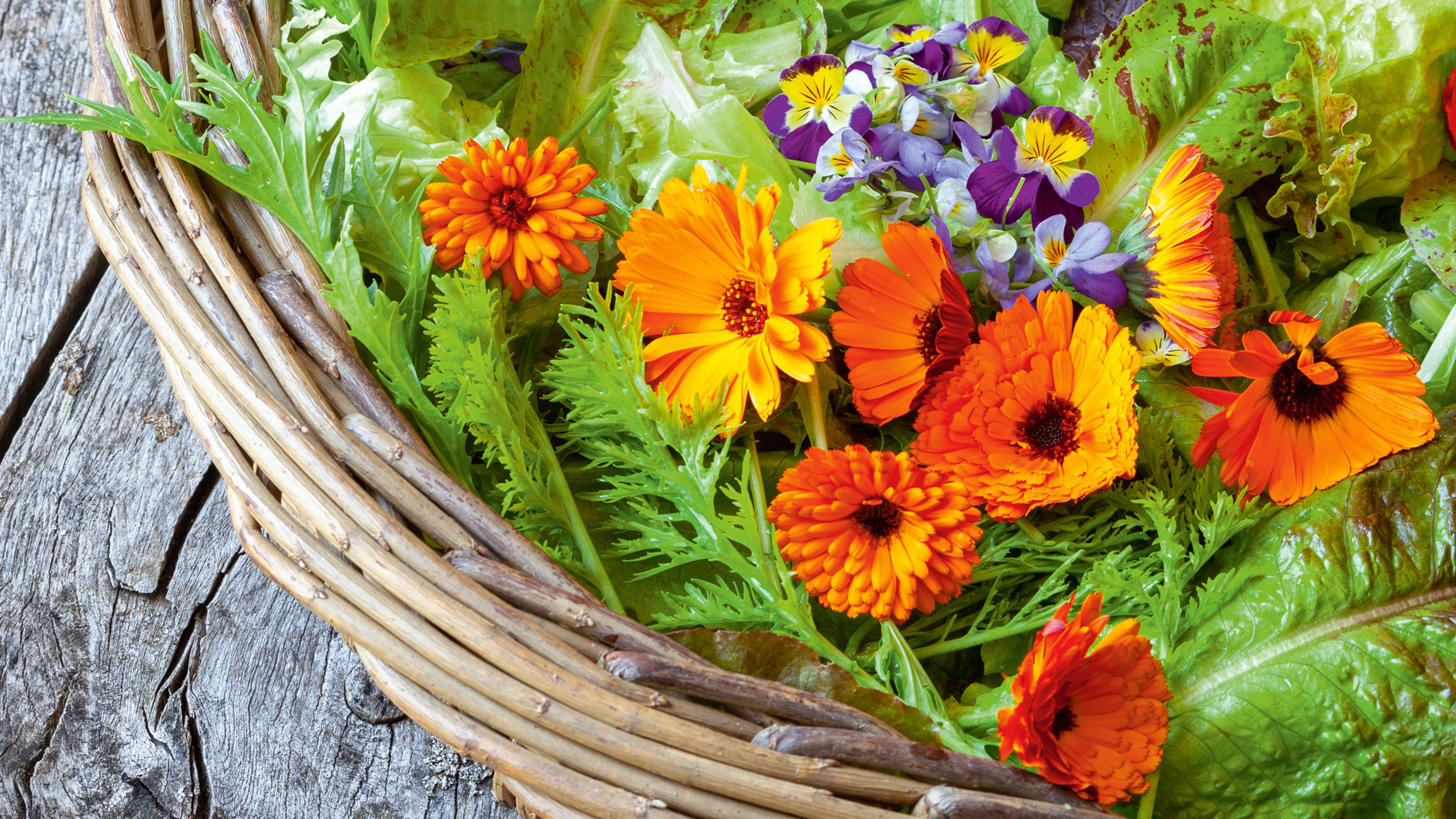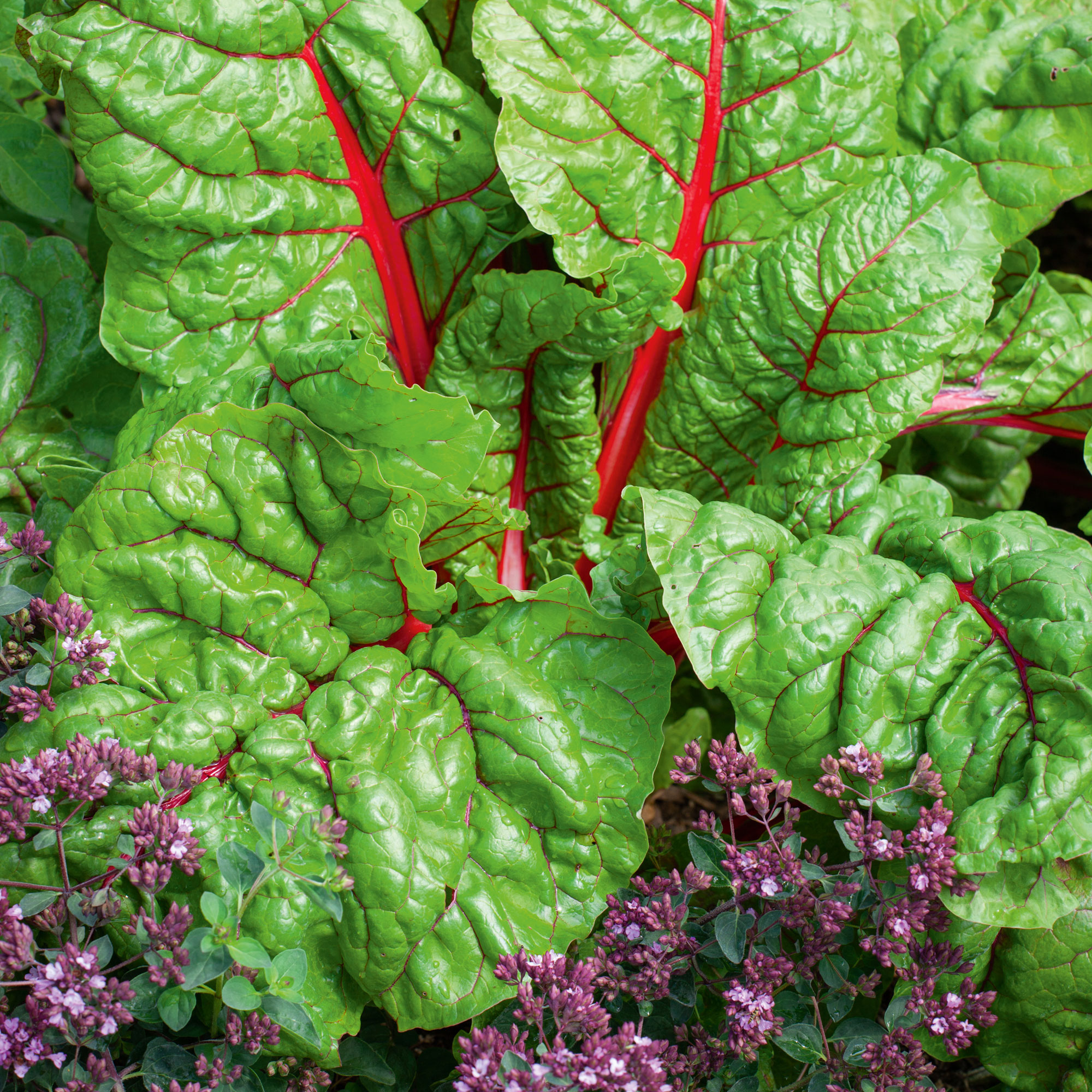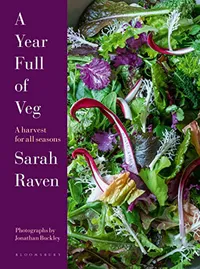Grow your own garden - Sarah Raven lets us in on her top tips
Cultivating a 'grow your own' garden will ensure your salad bowl is always full of the freshest leaves - with minimum effort


I first became absorbed by the idea of grow your own garden nearly forty years ago growing troughs of salads and pots of herbs on my doorstep in west London. I was - and still am - a passionate cook and just-picked food, straight from one's garden ideas, is a great life-enhancement for me.
I spent lots of time in Italy as a child and was a waitress at The River Café through my 20s, so when I found myself with a garden, food was one of the main things I was keen to grow.
With advice from a book or two and prompts from a couple of veg-growing friends, I landed on five plants in those early days, all of which I highly recommend and still grow.

My starter for five are: Swiss chard, French tarragon, parsley, runner beans and an oak leaf lettuce. What I hadn’t realised at the time is each of these are cut-and-come-again.
With the leafy plants, if you harvest them regularly, picking the outer (or in the case of tarragon, uppermost leaves), the heart of the plant grows to replenish them. And with the beans, if you keep picking the babies, more beans form.
As with growing a cut flower patch, when harvested right, these edible plants just keep going. Unlike potatoes, carrots, cabbages which once harvested that’s it, with these, they keep on producing for months at a stretch. And they need a peachy-place, with shelter, nice soil (or raised beds) in the sun.
Grow your own garden - Sarah Raven's top ten plants for small edible patches
In the trials we’ve done here at Perch Hill over thirty years, it’s five groups of plants —salads, herbs, leafy greens, edible flowers and beans I recommend for the highest production from the least space. And these are all easy to grow.
Sign up to our newsletter for style inspiration, real homes, project and garden advice and shopping know-how
Salads

Loose Leaf Lettuce
There are many different groups of lettuce and I’d recommend going for the loose Oak leaf varieties every time.
My current favourite is ‘Cocarde’, which if you keep picking the outer leaves, crops for ages, even when the weather is hot and dry. A patch of ten plants will do most households. We do three sowings to last us all year, including winter.
Rocket
At this time of year as the temperatures heat up and light levels build, it’s Wild Rocket you want to go for.
This has narrow leaves, with less substance to them than Salad Rocket, but the wild form is a short-lived perennial originating from the Mediterranean and it continues to grow (and not run straight up to flower) in the hot and dry.
If it threatens to flower, cut the whole clump back to within an inch off the ground, water and it will spring back again for further harvests. A patch of ten plants will do most households
Mustard
There are many mustard varieties, with ‘Wasabi’ my current favourite. It’s exceptionally slow to bolt (run up to flower), with a punchy, wasabi-like taste, but not so strong it takes your head off. I find the popular ‘Red Giant’ variety a bit too powerful to use every day.
Sow this three times a year, once in May for summer harvest, again in September to pick for autumn and winter and perhaps a third sowing in late February for April to June harvest. This is very quick growing so you won’t need more than 5-7 plants to add punchy tastes into all your salads. It’s good for stir-fries, too.
A Year Full of Veg: A Harvest for All Seasons by Sarah Raven | £22 at Amazon
Discover all the inside tips and tricks on how to grow your own, from garden to table, all broken down into monthly tasks and do do lists to make the journey a whole lot easier.
Herbs

French Tarragon
This is THE kitchen herb to grow at home as the flavour intensity of slow, home-grown leaves is double what you buy. Tarragon is a perennial which thrives with good drainage, so plant it with grit if your soil is heavy (such as London clay).
It will die back in autumn and reshoot in spring. Harvest regularly, cutting the tops of the stems, so it doesn’t run up to flower. If you like tarragon, an average family will need five plants to give plenty to pick April-October.
Don’t confuse this this with the more vigorous Russian Tarragon with silver leaves and a bitter taste.
Flat-leaved Parsley
‘Giant of Napoli’ is the variety I’ve grown here for years. Even though it hails from Naples, it's truly hardy and I can pick this, even from outside, in Sussex, pretty much all winter.
Sow twice a year, once in March (to crop all summer and autumn) and once in September (for winter and spring).
Buy seedlings or soak the seeds overnight in water, drain and dry them and then sow, well-spaced straight into the final container, or in a pot for planting out in 4-6 weeks’ time. Keep picking regularly to prevent it running to seed.
Basil
More people want to grow basil than almost any edible, but it’s not the easiest. There are a few things worth knowing.
‘Sweet Genovese’ is the classic, sweet pesto form. It’s key not to sow basil too early, but to wait till the cold nights have ended and light levels are good. Buy individual potted seedlings, or sow yourself, two or three seeds into a 9cm pot and put somewhere light but cool. If more than one seed germinates, thin down to a single seedling.
Grow on for three weeks and plant them out into the garden into a pot or in a sunny spot in a garden border. Finally pick carefully, with scissors, above a pair of leaves to encourage axillary bud formation.
Leafy greens

Swiss Chard
The easiest, highest producing plant in all the edibles I’ve ever grown. This is like a strong-tasting spinach, which I’m crazy about it for pasta sauces, gratins, and serving with meat and fish in a bechamel sauce (with plenty of nutmeg).
It’s SO easy to grow, whereas spinach is tricky as it bolts (runs up to flower) very readily in the hot and dry, chard will put up with almost all growing situations.
Sow direct, straight into grow in a pot or place you want it, spacing two seeds 40cms apart. If both germinate, thin to one. You should then be cropping for five to six months solid.
Kale
‘Curly Scarlet’ is a more compact variety and we grow the statuesque ‘Redbor’, so select what’s best for you according to the space available. The great thing about kales is they crop best once the weather gets cold, so I harvest mine a couple of times a week from November to May.
As with chard, you want to end up with plants about 40cms apart, so this will be the largest plants to go for to fit easily in small edible patches, but they’re well worth it and can form the central apex of any patch, around which you place all other crops.
Edible flowers

Runner Beans
Runner beans are great to grow for their beans alone and are perfect for a central high teepee in the sun. To have them tasty and tender, keep picking the beans as often as you can, but pick handfuls of the flowers too.
This will (in a good way) curtail the harvest of beans and the flowers taste fantastic, truly beany, great scattered through rice or over salads, pasta and risottos. I now love and pick them more than the runners.
Nasturtium
I love the jolly colours in ‘Tip Top Mix’, or if you want something sophisticated, go for ‘Empress of India’. You can eat all parts of this plant — the leaves, buds, flowers and seedpods. Take care to check for cabbage white caterpillars or eggs as you harvest.
These are plants to grow in a sunny, but rubbishy corner, as you often get where you might park the car. They thrive in harsh, infertile situations, with almost no soil as long as it’s in good light.
Sow either straight into their final position, or two seeds into a little pot. If both germinate, thin to one. Allow the roots to fill the pot and plant them out.

Sarah Raven is a gardener, teacher and writer who runs her own online plant nursery specialising in colourful, productive cut flower seeds and seedlings, edible crops and a large range of perennials, shrubs and roses (as well as the kit to grow them).
Over the last three decades, she has written regularly for the Financial Times, The Telegraph, and many other publications including Ideal Home.
